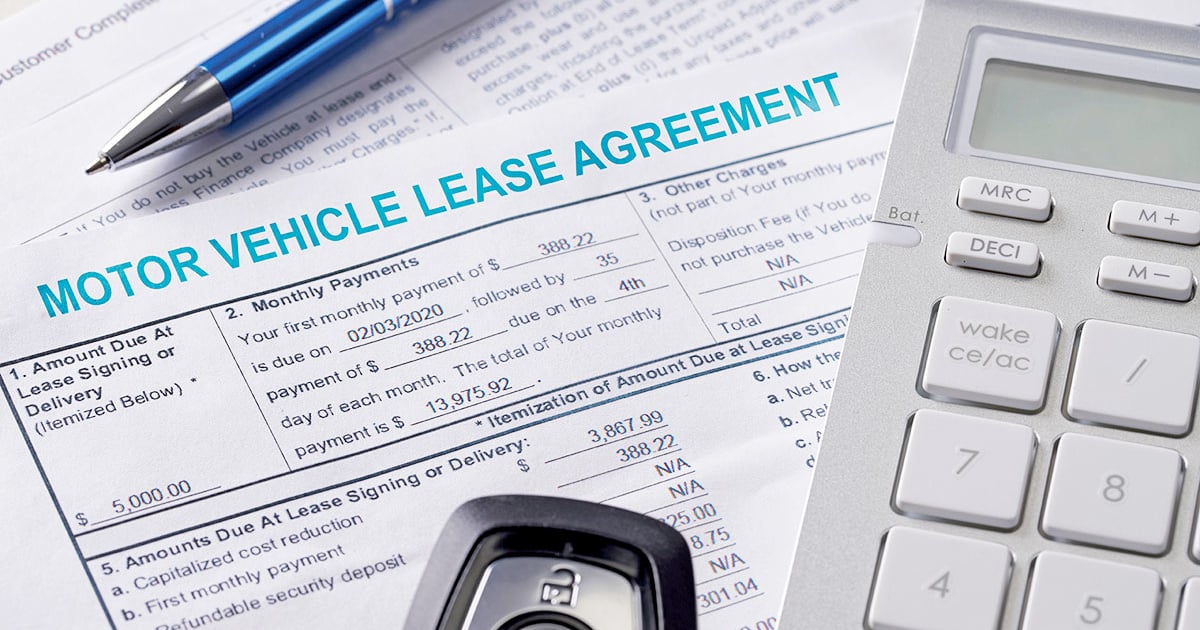
Leasing of new General Motors vehicles has picked up after hitting a low point last year, but the automaker’s captive finance company said there are no plans for a significant boost while incentives remain low.
The percentage of GM’s sales that were leases rose slightly to 16.5 percent in the first quarter from a low of 13.9 percent for the last half of 2022, according to GM Financial data. Yet that remains down from 24 percent at the end of 2019.
Leasing has “historically been a highly incentivized product; without the need for incentives to drive sales, leasing mix is going to be where it’s at,” GM Financial CEO Dan Berce told Automotive News.
“I think the trough we hit in lease sales mix in mid-’22 is the low point,” he said. “I think you will see it go up from here, but I wouldn’t expect it to reach historical levels anytime in ’23.”
GM Financial’s outlook on leasing largely aligns with experts’ view of the broader industry. Analysts say leasing’s share of sales this year is forecast to rise from what Cox Automotive called at least a 10-year low in 2022, but not to where it was in 2019. The pandemic and subsequent supply chain bottlenecks reduced inventories, prompting automakers to scale back incentives amid elevated pricing and demand.
“Leasing is down for everybody,” said Melinda Zabritski, Experian’s senior director of automotive financial solutions.
Last year, 17 percent of new vehicles retailed were leased, down roughly 10 percentage points from 2020, Experian data shows. First-quarter data suggests the figure still is under 20 percent, Zabritski said.
With rising interest rates, “I think consumers are probably hungry for leasing, if they’re available, just from the pure affordability aspect of it,” she said.
The average monthly lease payment is going up, though it remains lower than the average monthly auto loan payment, Zabritski said. The average monthly lease payment in the fourth quarter was $578, up from $469 per month in 2020, according to Experian data.
In addition, the used-vehicle market is in flux, creating “more of a gamble” for automakers trying to forecast residual values, she said.
GM CFO Paul Jacobson said on the automaker’s first-quarter earnings call in April that it forecasts “some normalization of incentives and pricing to a little bit lower demand” this year.
Lease mix
| Q4 2022 | 13.9% | |
| Q3 2022 | 13.9% | |
| Q2 2022 | 15.8% | |
| Q1 2022 | 17% | |
| Q4 2021 | 15% | |
| Q3 2021 | 16.5% | |
| Q2 2021 | 19.2% | |
| Q1 2021 | 20.1% | |
| Q4 2020 | 20.9% | |
| Q3 2020 | 21.3% | |
| Q2 2020 | 18% | |
| Q1 2020 | 23% | |
| Q4 2019 | 24% | |
| Q3 2019 | 23% |
Berce told Automotive News that incentives could take multiple forms, from rate subvention on loans to a higher lease sales mix.
GM Financial originated $3.9 billion in leases in the first quarter, up slightly from $3.5 billion a year ago, which it attributed to increases in retail sales and the average amount financed.
A dropoff in lease income, though expected, had an impact on GM Financial’s first-quarter results. Net income fell 39 percent to $584 million in the first three months of this year. GM Financial’s lease portfolio is smaller because of the decline in leasing mix, Berce said, while higher used-vehicle values in recent years led to slower depreciation and smaller gains on lease terminations.
GM’s dealer council leaders told Automotive News ahead of the 2023 NADA Show in Dallas they expected leasing would pick up this year. In May, Keith McCluskey, chairman of the Chevrolet National Dealer Council, said leasing is an important tool for dealers that can both reduce consumers’ monthly payments and keep them in the sales cycle every few years.
“Dealers love leasing,” said McCluskey, CEO of McCluskey Chevrolet in Cincinnati. “The person needs to come back to the dealership, and that’s an opportunity for us to lease or sell them another vehicle and get a great little used-car trade-in that had one owner.”
GM said all of its eligible electric vehicles will qualify for the full $7,500 federal tax credit on EV purchases, according to an updated list from the IRS. That includes the 2022-23 Chevrolet Bolt EV and EUV, which will end production this year; the 2023-24 Cadillac Lyriq, which went into production in 2022; and the upcoming 2024 Chevrolet Silverado, Blazer and Equinox EVs.
The federal Inflation Reduction Act created a $7,500 commercial tax credit that can apply to leased EVs. Unlike the tax credit for purchased EVs, the commercial tax credit does not have eligibility requirements around buyer income, sticker price, sourcing or assembly locations; it also does not directly transfer to the consumer. Instead, the leasing entity could use it to lower the price of a leased EV.
“Just about the entire EV lineup for GM is going to be eligible for the credit on a purchase, which isn’t the case for a lot of other OEMs,” Berce said. “GM has the benefit here of not having to do anything unnatural as it relates to lease sales mix because if the customer purchases it, they can get the credit, or if they lease it, they can get the credit.”

